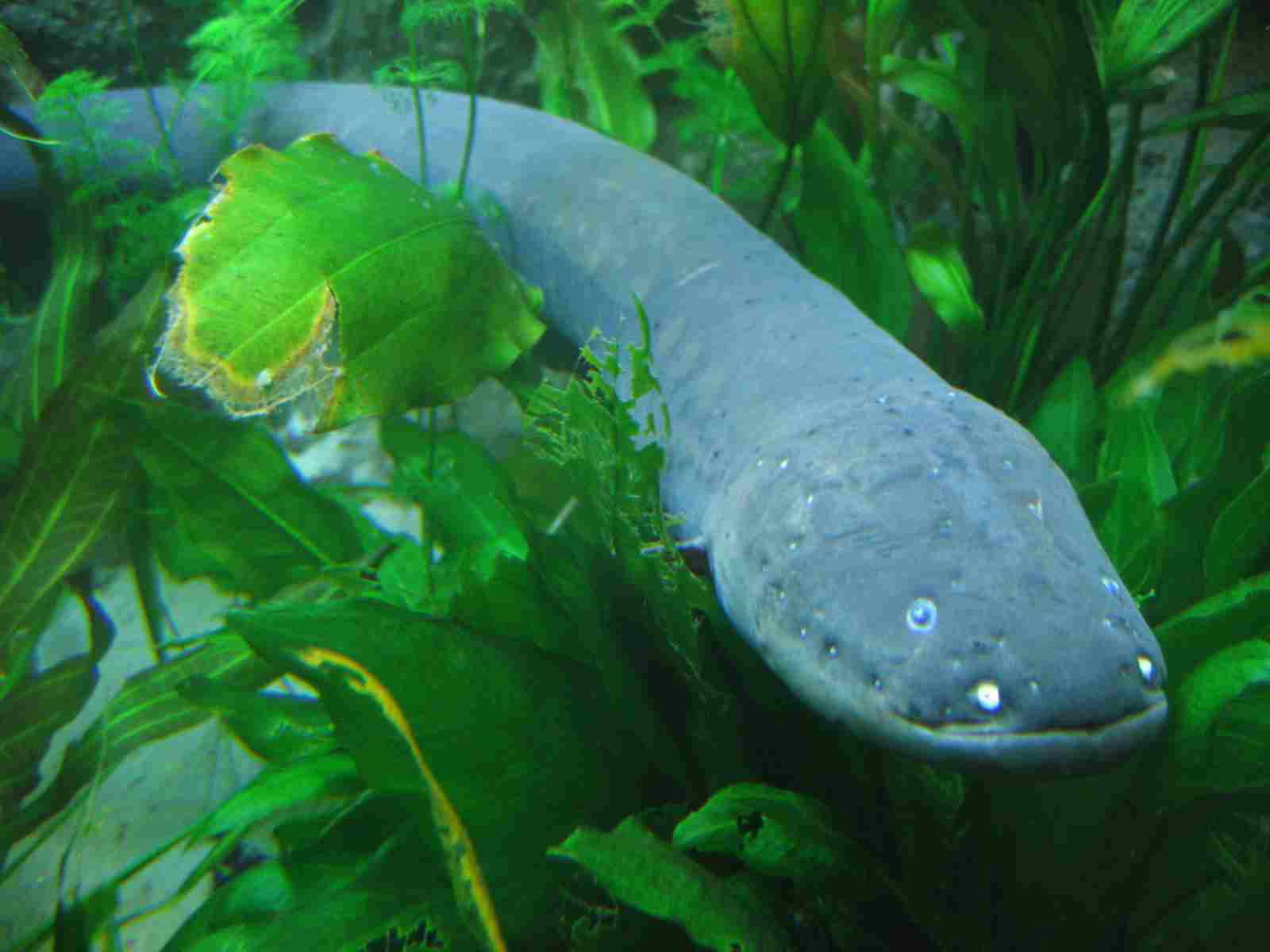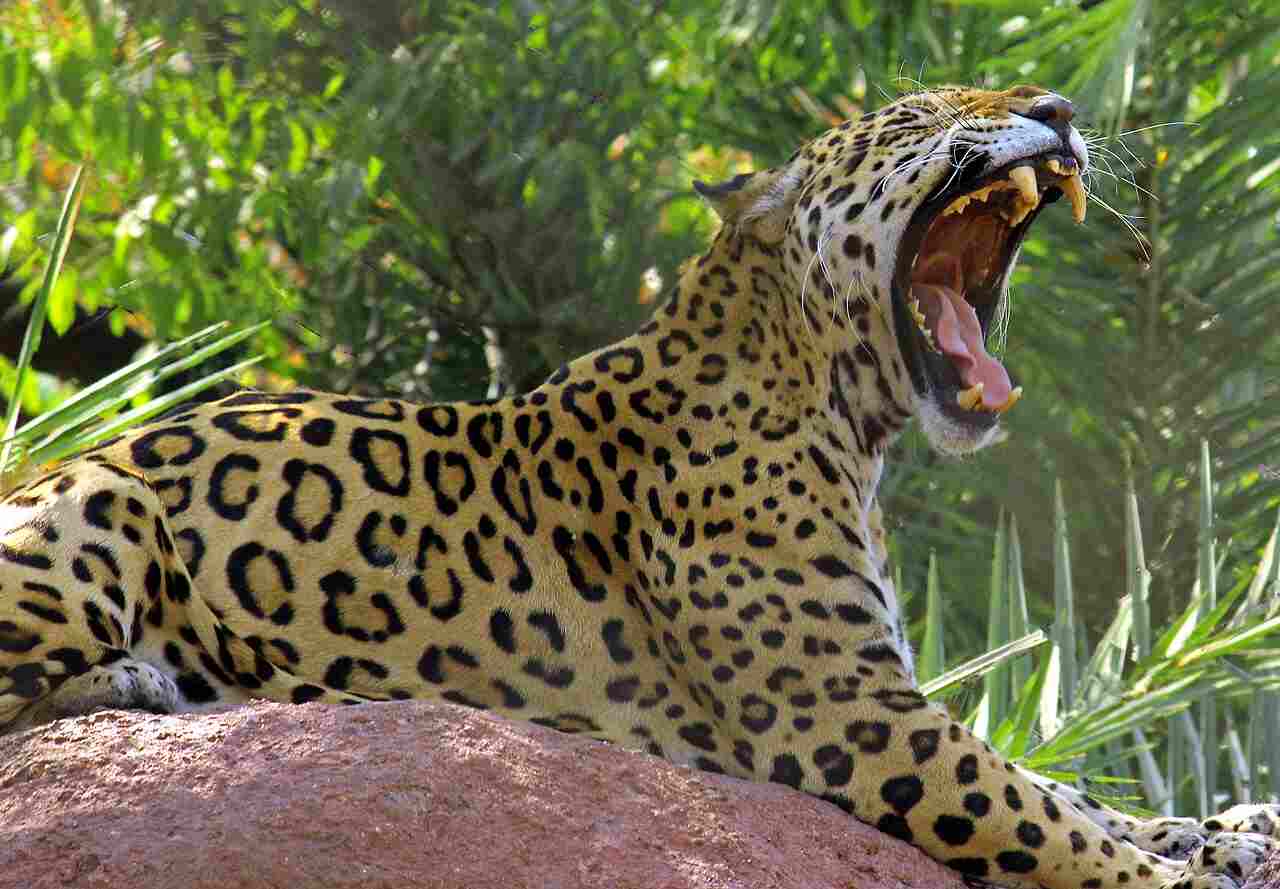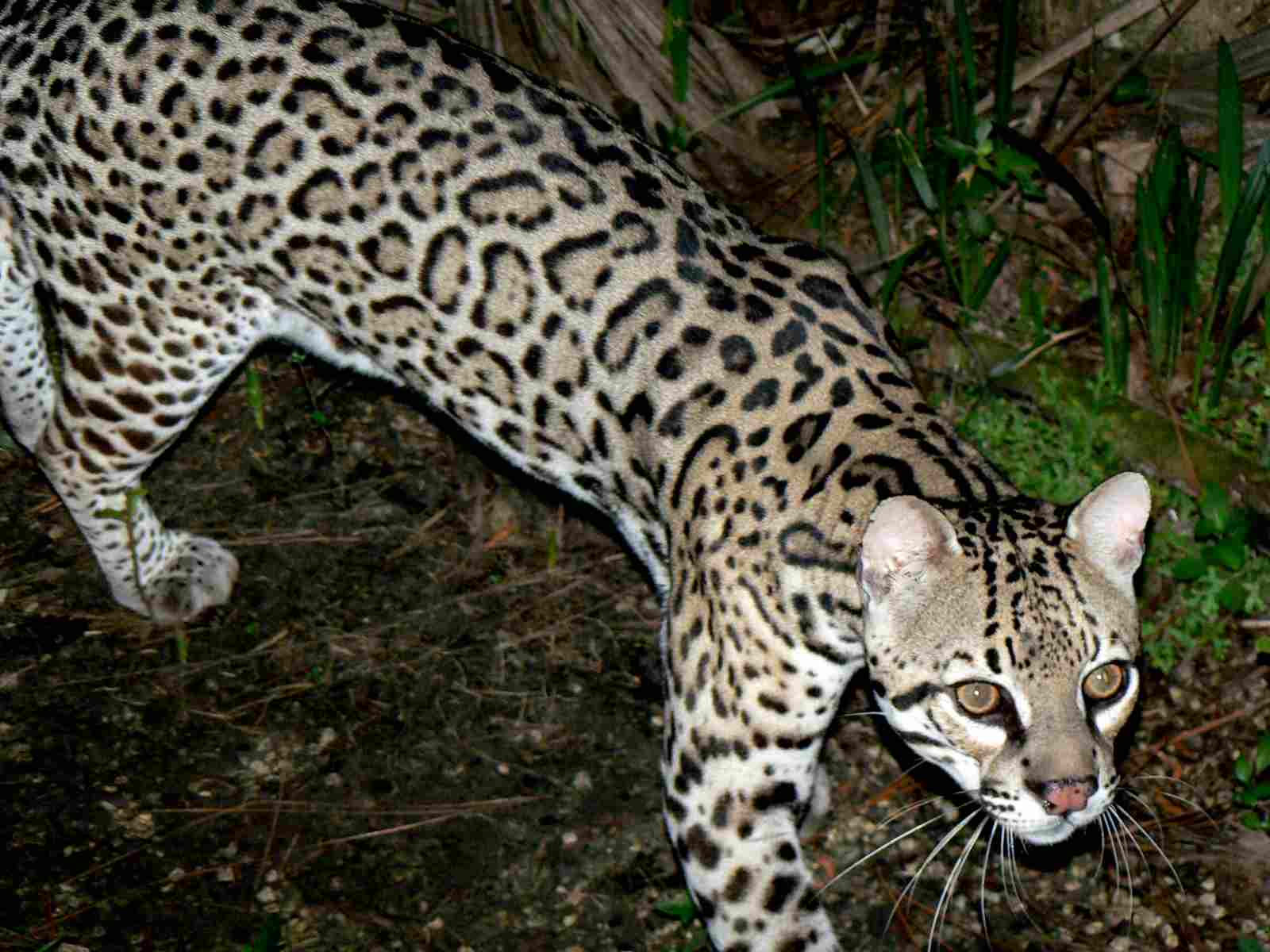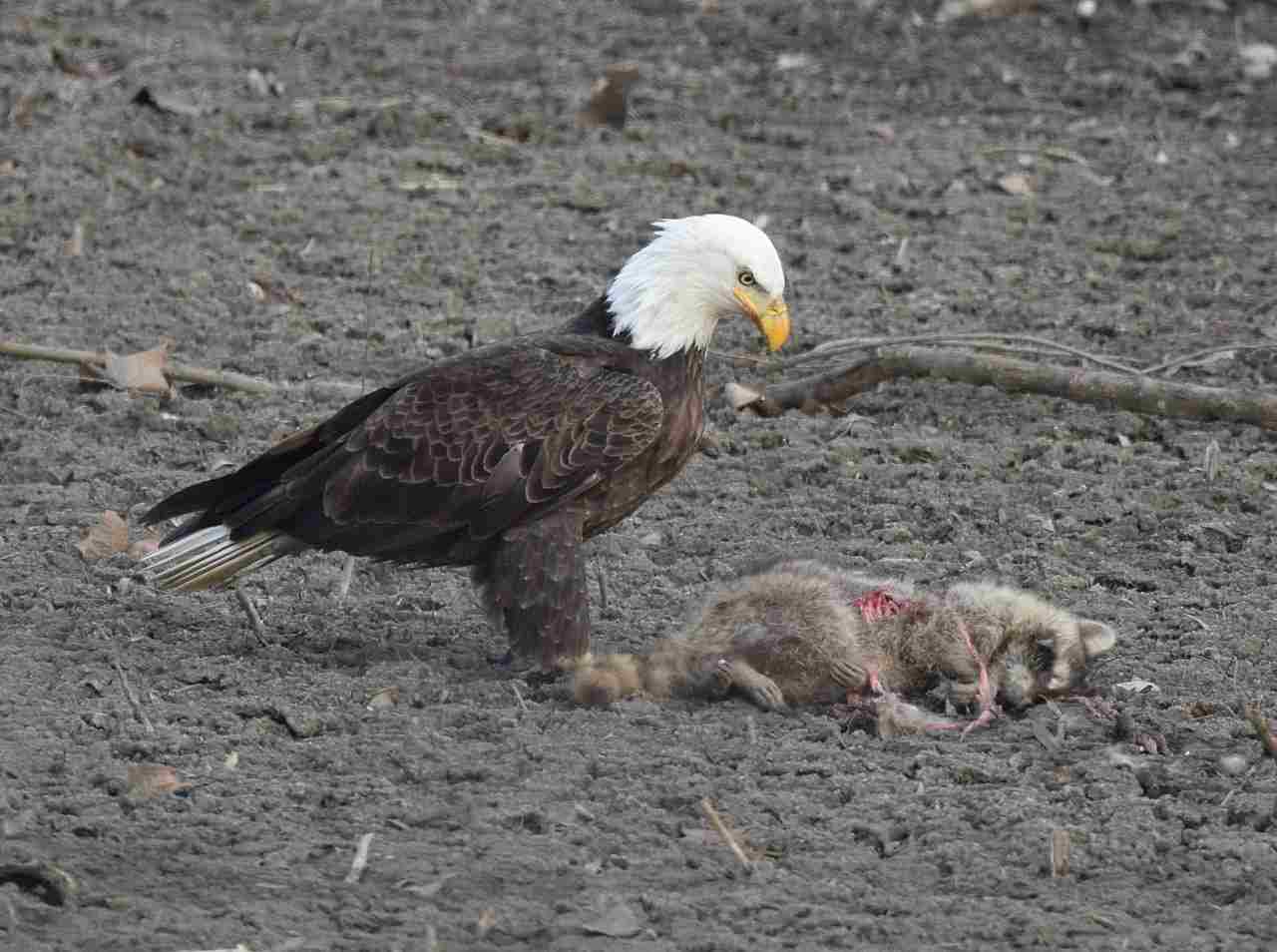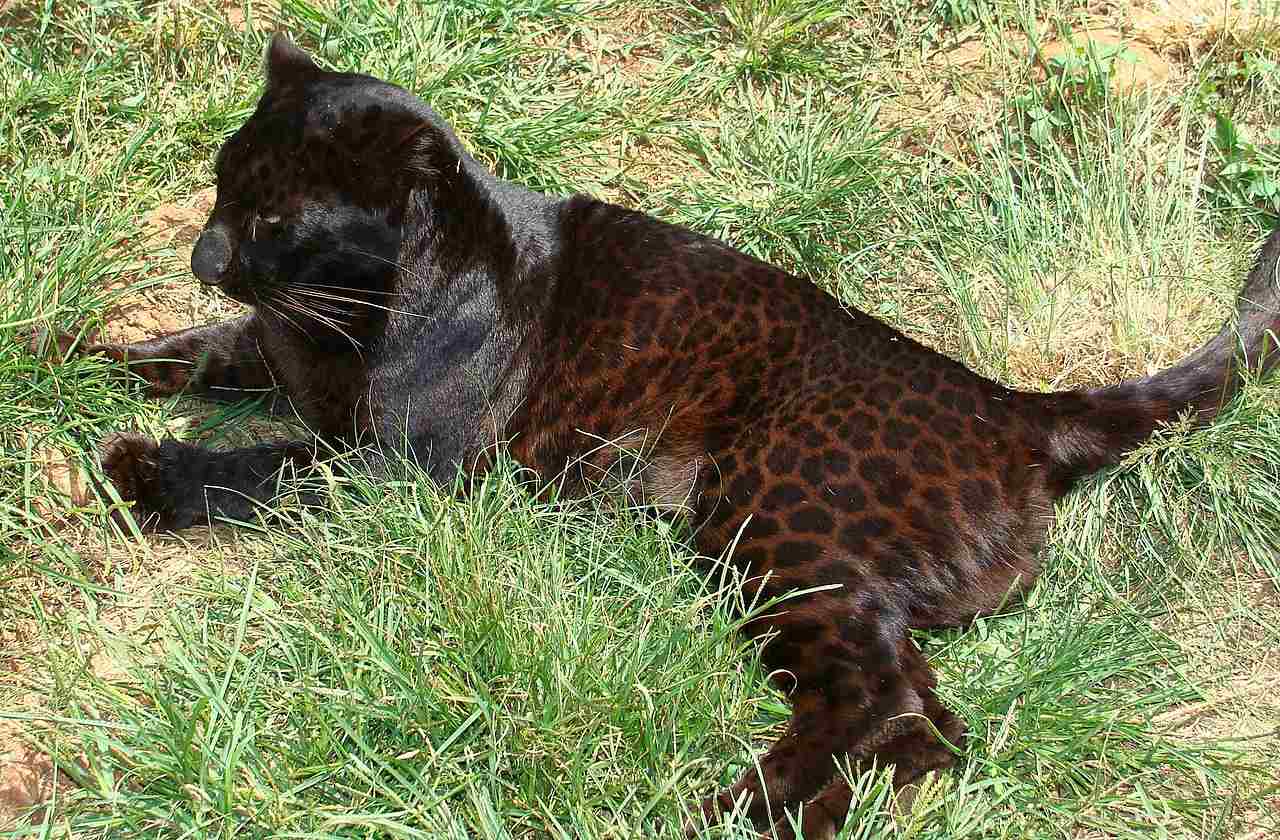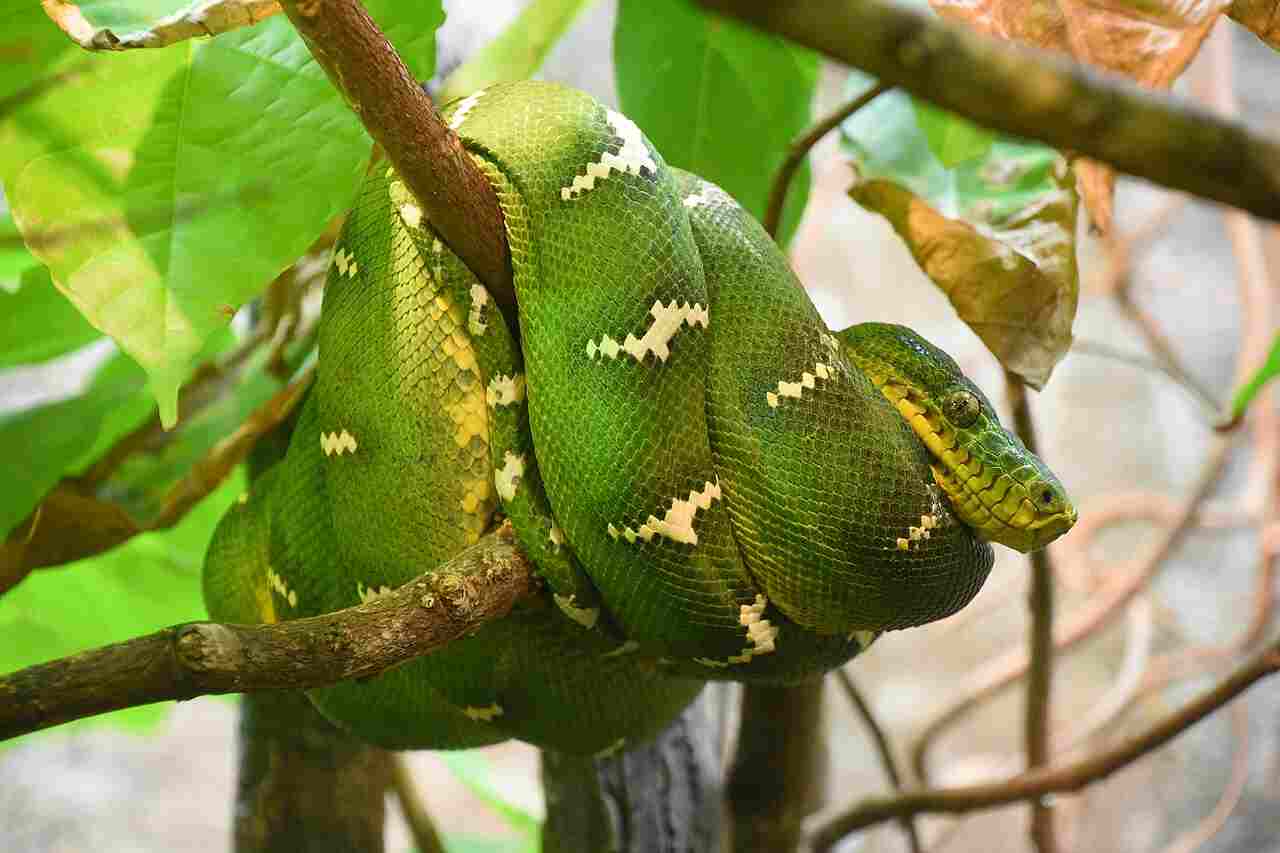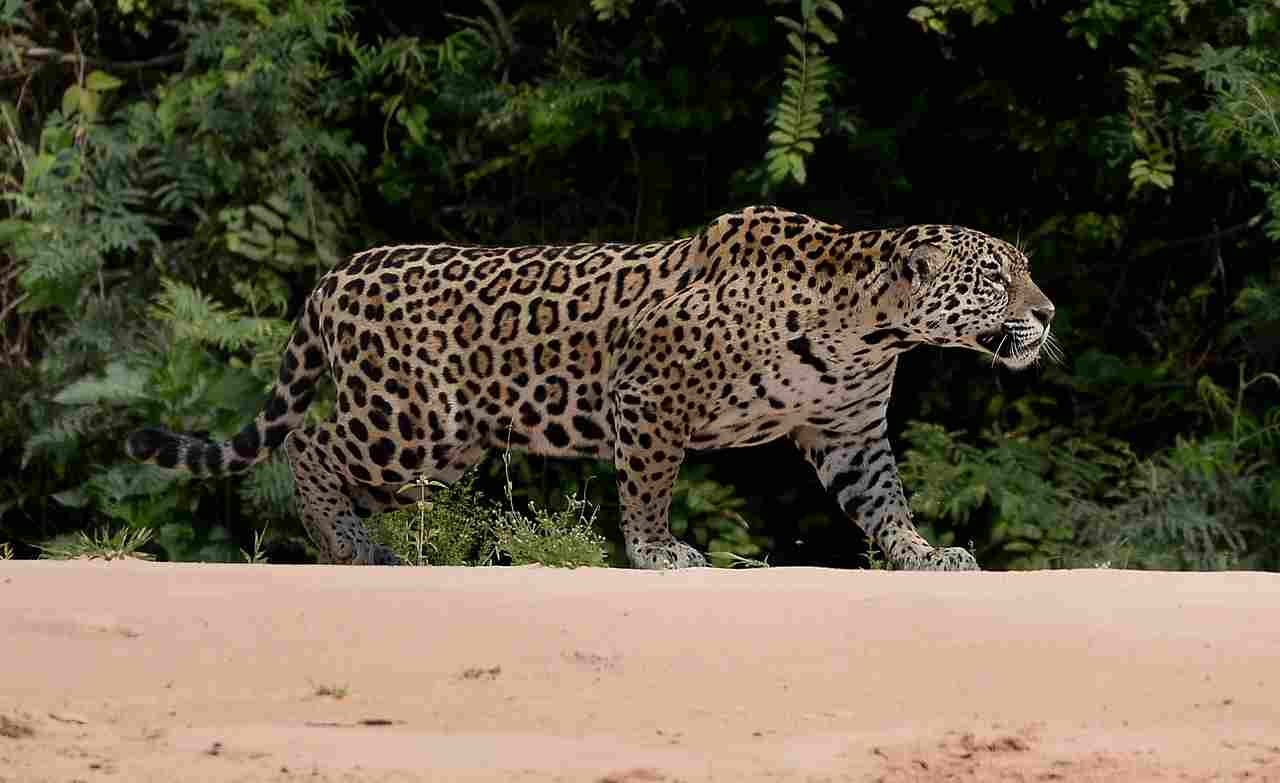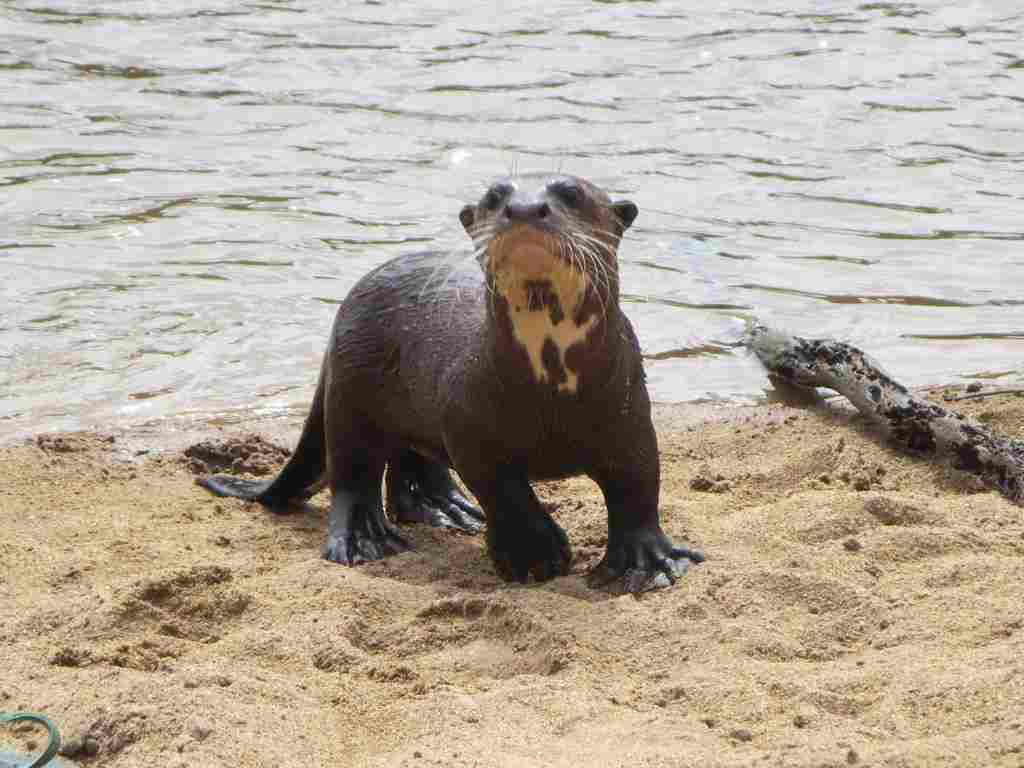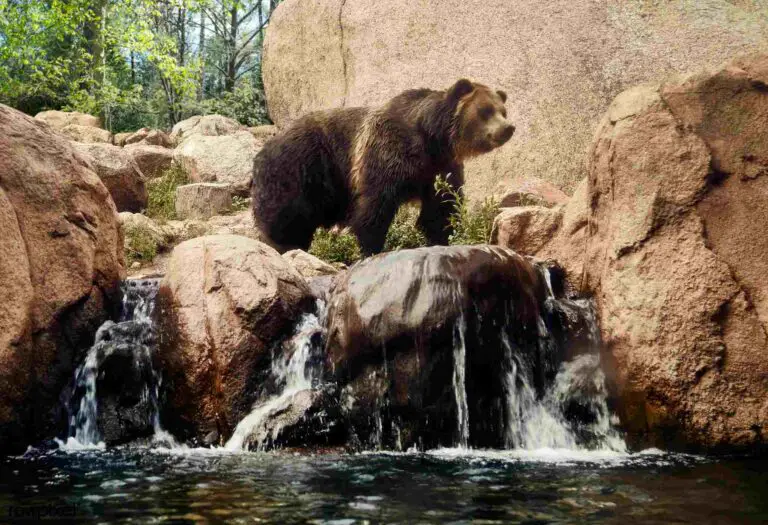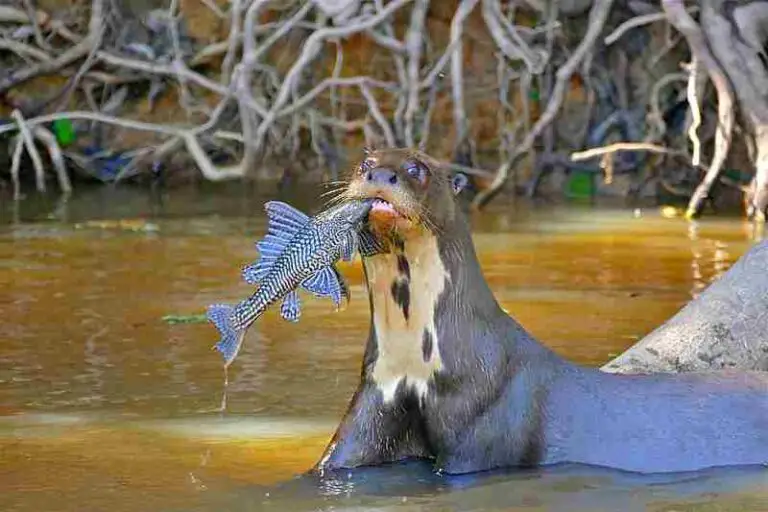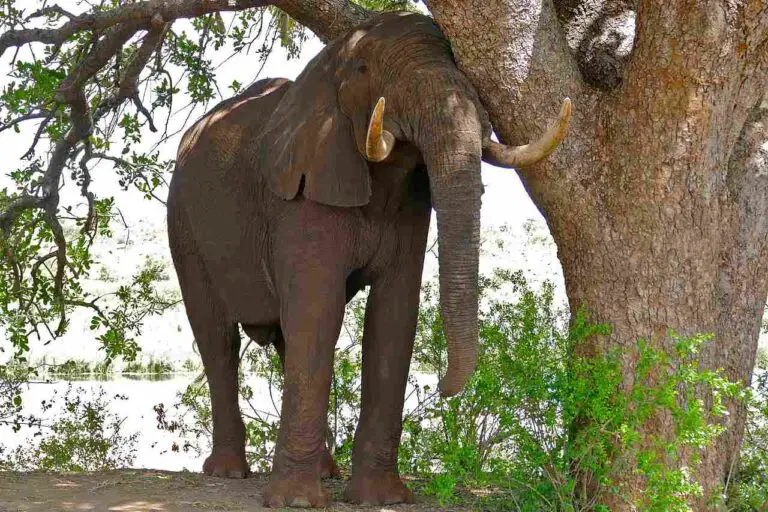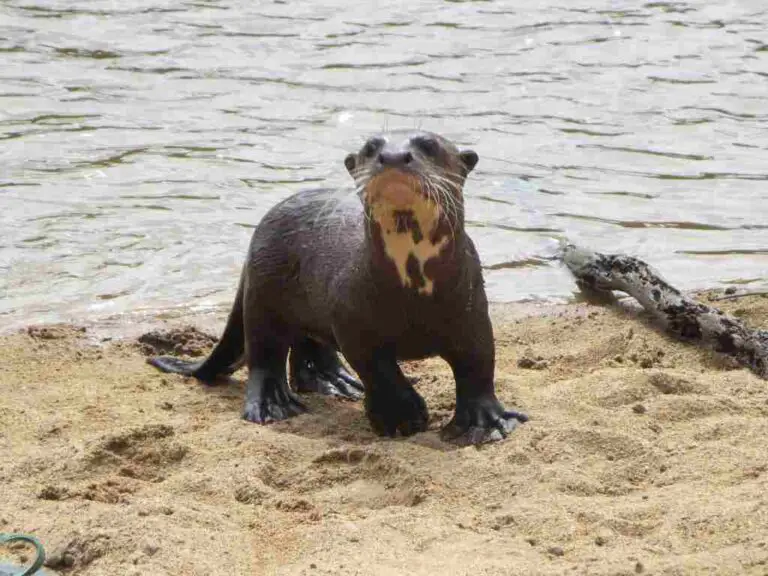9+ Predators In The Amazon Rainforest Discussed
Examples of predators in the Amazon rainforest are jaguars, black caimans, green anacondas, electric eels, arapaimas, harpy eagles, piranhas, pumas, giant otters, and vampire bats. These predators vary greatly in size, behavior, and hunting techniques, but they all play crucial roles in maintaining the balance of the ecosystem. From the stealthy and powerful jaguar, which hunts a wide range of prey, to the electric eel that uses electric shocks to navigate and capture food, each predator contributes to the complex web of life in the rainforest. Despite their strength, many of these species face threats from habitat loss, human encroachment, and other environmental pressures, underscoring the importance of conservation efforts to ensure their continued survival.
1. Jaguar
The jaguar, scientifically known as Panthera onca, is one of the most formidable predators in the Amazon rainforest. As the largest cat in the Americas, it possesses a robust build, powerful limbs, and a set of razor-sharp teeth, enabling it to tackle a wide range of prey. Jaguars are known for their distinctively patterned fur, adorned with rosettes that serve as camouflage among the dense foliage of the rainforest. They are solitary animals, typically hunting alone, and are skilled swimmers, often seen prowling near rivers and swamps in search of food. With a bite force among the strongest of all big cats, the jaguar can pierce through the thick hides or shells of its prey, such as caimans and turtles.
Jaguars play a crucial role in maintaining the balance of the Amazonian ecosystem. They are apex predators, meaning they sit at the top of the food chain, controlling the population of other species and thus contributing to the health of the forest. Their diet includes a variety of animals, from mammals like capybaras and deer to birds and reptiles. Despite their power and significance, jaguars face threats from habitat loss and illegal poaching, leading to declining populations in some areas. Conservation efforts are crucial to ensure the survival of this majestic species and the continued health of the Amazon rainforest.
2. Black Caiman
The black caiman (Melanosuchus niger) is the largest of all the caiman species and one of the most formidable predators in the Amazon rainforest. These massive reptiles can grow to over 15 feet in length, with some exceptional individuals reaching even greater sizes. Black caimans have a distinctive dark coloration, which helps them blend into the murky waters where they reside. Primarily nocturnal, they hunt at night, using their keen eyesight and acute hearing to locate prey. Their diet is diverse, ranging from fish and birds to larger mammals such as capybaras and deer. The black caiman’s powerful jaws and sharp teeth make it a dominant force in its aquatic environment.
Despite their dominance in the Amazonian waterways, black caimans have faced significant threats from human activity, particularly hunting for their hides, which was prevalent in the mid-20th century. This led to a significant decline in their population, but conservation efforts have since helped their numbers recover. They play a crucial role in the ecosystem, controlling populations of other species and contributing to the overall balance of the food chain. Efforts to protect their habitats and ensure the health of the waterways they inhabit are essential for the continued survival of the black caiman.
3. Green Anaconda
The green anaconda (Eunectes murinus) is one of the largest snakes in the world, known for its immense size and incredible strength. Found in the swamps, marshes, and slow-moving rivers of the Amazon rainforest, this massive constrictor can grow to lengths exceeding 30 feet and weigh over 500 pounds. The green anaconda is a powerful predator, capable of subduing large prey by coiling around it and exerting immense pressure until it suffocates. Its diet consists of a wide range of animals, including capybaras, deer, caimans, and even jaguars. Despite their size, these snakes are known for their stealth, often lying in wait for unsuspecting prey near the water’s edge.
Green anacondas play an important role in maintaining the balance of the Amazon ecosystem. They help control populations of various species, ensuring that no single species dominates the environment. Although they are formidable predators, green anacondas face threats from habitat destruction and human encroachment. Additionally, their large size and fearsome reputation have led to instances of persecution and illegal capture. Conservation efforts are essential to protect this iconic species and preserve the ecological balance they help maintain.
4. Electric Eel
The electric eel (Electrophorus electricus) is a unique and fascinating predator found in the Amazon rainforest. Despite its name, it’s not a true eel but a type of knifefish, capable of generating powerful electric shocks to navigate its environment, communicate, and subdue prey. Electric eels can grow up to 8 feet in length, making them among the largest freshwater fish in the Amazon. Their ability to generate electricity comes from specialized cells called electrocytes, which can produce shocks of up to 600 volts. This capability allows them to stun prey, such as small fish and amphibians, and can even deter larger threats like caimans or jaguars.
The electric eel’s role in the Amazon ecosystem is both as a predator and a defensive species. It occupies a unique niche in the food chain, using its electric shocks to hunt in the murky waters where visibility is limited. While they primarily feed on small fish, they are also known to consume crustaceans and small birds. Despite their remarkable abilities, electric eels face threats from habitat loss and water pollution, which can disrupt their delicate ecosystems. Conservation efforts focused on preserving their habitats and maintaining clean waterways are crucial for the survival of this unique species.
5. Arapaima
The arapaima (Arapaima gigas), also known as the pirarucu, is one of the largest freshwater fish in the Amazon rainforest, capable of reaching lengths of over 10 feet and weighing up to 485 pounds. This ancient fish has a streamlined body and a unique lung-like air-breathing system, allowing it to survive in oxygen-poor waters. Arapaimas are primarily piscivorous, feeding on smaller fish, but they also consume other aquatic organisms, such as crustaceans and insects. Their size and strength make them formidable predators, with a significant impact on the aquatic ecosystems they inhabit.
Despite their resilience, arapaimas face various threats, particularly from overfishing and habitat loss. Their large size and tasty meat make them a target for commercial and subsistence fishing, leading to population declines in some areas. Conservation efforts are underway to protect this iconic species, focusing on sustainable fishing practices and habitat restoration. The arapaima’s role in the Amazon’s food chain is vital, and ensuring their survival is crucial for maintaining the health and balance of the rainforest’s aquatic ecosystems.
6. Harpy Eagle
The harpy eagle (Harpia harpyja) is one of the most powerful and majestic birds of prey in the Amazon rainforest. Known for its impressive size and striking appearance, this eagle has a wingspan that can reach over 7 feet and large, powerful talons capable of gripping and carrying substantial prey. Harpy eagles primarily hunt in the forest canopy, targeting medium to large mammals like sloths and monkeys, as well as birds and reptiles. Their keen eyesight allows them to spot prey from great distances, and their silent flight and swift attacks make them highly effective hunters.
Harpy eagles are apex predators, playing a critical role in controlling populations of other species in the Amazon rainforest. However, they face significant threats from deforestation and habitat fragmentation, which limit their hunting territories and reduce their breeding grounds. The loss of large trees, where they build their nests, has also contributed to their declining populations in some regions. Conservation efforts are essential to protect the harpy eagle and its habitat, ensuring that this magnificent predator continues to soar through the rainforests of the Amazon.
7. Piranha
Piranhas are a group of carnivorous freshwater fish native to the Amazon rainforest, known for their sharp teeth and aggressive feeding behavior. These small to medium-sized fish typically have robust bodies and prominent lower jaws, equipped with razor-like teeth that are perfect for tearing flesh. While piranhas are often portrayed as ferocious predators that can strip flesh in moments, their behavior in the wild is generally more complex and less sensational. They tend to hunt in schools, which provides safety in numbers, and their diet often includes a mix of small fish, insects, and plant material. However, during times of food scarcity or heightened stress, piranhas can exhibit a more aggressive feeding frenzy, which has contributed to their fearsome reputation.
Piranhas play an essential role in the Amazonian ecosystem, helping to control the populations of other aquatic species and cleaning up dead or injured animals, thereby maintaining the balance in their environment. Despite their infamous image, they are generally not a threat to humans under normal conditions. The main threats to piranhas come from habitat destruction, overfishing, and changes in river systems due to damming and other human activities. Conservation efforts focused on preserving their natural habitats are crucial to ensure the continued health of these vital components of the Amazon’s aquatic ecosystem.
8. Puma
The puma (Puma concolor), also known as the cougar or mountain lion, is a highly adaptable big cat found across the Americas, including the Amazon rainforest. Known for its stealth and agility, the puma has a slender body, long tail, and powerful legs, allowing it to leap great distances and quickly close in on its prey. Although pumas are typically associated with mountainous regions, they are versatile enough to thrive in a variety of habitats, including rainforests. In the Amazon, pumas are solitary predators, primarily hunting at dawn and dusk. Their diet consists of a wide range of animals, from deer and capybaras to smaller mammals, birds, and reptiles.
Pumas play an important role in controlling prey populations, contributing to the overall health of the Amazon rainforest ecosystem. As apex predators, they help maintain balance by regulating the numbers of other species. Despite their adaptability, pumas face threats from habitat loss, human encroachment, and conflicts with livestock owners. Conservation efforts aimed at preserving their habitats and reducing human-wildlife conflicts are essential to ensure the continued survival of this elusive predator in the Amazon rainforest and beyond.
9. Giant Otter
The giant otter (Pteronura brasiliensis) is the largest member of the otter family and a formidable predator in the Amazon rainforest’s waterways. Growing up to 6 feet in length, giant otters are known for their social behavior, living in family groups and cooperating in hunting and territory defense. They have sleek bodies, webbed feet, and strong tails, making them excellent swimmers and skilled at catching prey such as fish, crustaceans, and small reptiles. Their sharp teeth and powerful jaws allow them to swiftly catch and consume their prey, often working together to corral fish into a trap-like formation.
Giant otters play a crucial role in the Amazon’s aquatic ecosystem by regulating fish populations and maintaining balance in the food chain. However, they are among the most threatened otter species, facing significant risks from habitat loss, water pollution, and illegal hunting for their dense fur. The decline in fish stocks due to overfishing also impacts their survival. Conservation efforts that focus on protecting their habitats, reducing pollution, and regulating fishing practices are vital to ensure the giant otter’s continued existence in the Amazon rainforest.
10. Vampire Bat
The vampire bat (Desmodus rotundus) is one of the most unique predators in the Amazon rainforest, renowned for its blood-feeding behavior. Unlike other bats that feed on fruit or insects, vampire bats have evolved to subsist on the blood of other animals, a behavior known as hematophagy. They typically feed on the blood of large mammals like cattle, deer, or tapirs, using their sharp teeth to create a small incision and then lapping up the blood with their specialized tongues. Vampire bats are highly social, living in colonies and displaying complex social behaviors, such as grooming and food sharing, which contribute to their survival in the rainforest environment.
Despite their somewhat ominous reputation, vampire bats play a role in the ecosystem by removing sick or weak individuals from animal populations, thereby helping maintain the health of other species. However, they can be a nuisance to livestock owners and pose a risk of spreading diseases like rabies. Conservation efforts for vampire bats involve managing their interactions with human activities and livestock, while also recognizing their ecological role. Preserving their natural habitats and finding ways to minimize human-wildlife conflicts are key to maintaining a balanced approach to the conservation of this unique predator.
*Summary
-
Jaguar
-
Largest cat in the Americas, robust build, powerful limbs, and sharp teeth
-
Skilled swimmer, hunts near rivers and swamps
-
Apex predator with a diverse diet; plays a crucial role in the ecosystem
-
Threats include habitat loss and poaching; conservation is key to their survival
-
-
Black Caiman
-
Largest caiman species, over 15 feet long
-
Nocturnal predator with a diet including fish, birds, and large mammals
-
Significant role in controlling other species’ populations
-
Threatened by hunting and habitat loss; conservation has helped their recovery
-
-
Green Anaconda
-
One of the largest snakes, can grow over 30 feet
-
Constrictor, known for strength and stealth
-
Diet includes a wide range of animals from capybaras to caimans
-
Threatened by habitat destruction and human encroachment
-
-
Electric Eel
-
Not a true eel; capable of generating electric shocks up to 600 volts
-
Uses electricity for navigation, communication, and hunting
-
Predator of fish, amphibians, and occasionally other small animals
-
Threatened by habitat loss and water pollution
-
-
Arapaima
-
One of the largest freshwater fish, can grow over 10 feet long
-
Air-breathing system, primarily piscivorous
-
Key role in controlling fish populations in the Amazon
-
Threatened by overfishing and habitat loss
-
-
Harpy Eagle
-
One of the largest and most powerful birds of prey
-
Hunts medium to large mammals like sloths and monkeys
-
Apex predator, plays a critical role in the forest canopy
-
Threatened by deforestation and habitat fragmentation
-
-
Piranha
-
Group of carnivorous fish known for sharp teeth and aggressive feeding behavior
-
Generally hunts in schools for safety
-
Diet includes small fish, insects, and plant material
-
Threats include habitat destruction and overfishing
-
-
Puma
-
Known for stealth and agility, can leap great distances
-
Solitary predator, hunts at dawn and dusk
-
Diet includes deer, capybaras, and smaller mammals
-
Threatened by habitat loss and human conflicts
-
-
Giant Otter
-
Largest member of the otter family, social animals
-
Excellent swimmers, known for hunting fish in family groups
-
Important for regulating fish populations in the Amazon’s waterways
-
Threatened by habitat loss, pollution, and overfishing
-
-
Vampire Bat
-
Feeds on the blood of other animals, primarily large mammals
-
Highly social, living in colonies and exhibiting complex social behaviors
-
Helps maintain the health of other species by removing sick or weak animals
-
Threatened by habitat loss and conflicts with livestock owners
-
| Predator | Description |
| Jaguar |
Largest cat in the Americas; robust and powerful; skilled swimmer; threatened by habitat loss and poaching
|
| Black Caiman |
Largest caiman species; nocturnal predator; significant role in the ecosystem; threats from hunting and habitat loss
|
| Green Anaconda |
One of the largest snakes; constrictor; wide-ranging diet; threatened by habitat destruction and human encroachment
|
| Electric Eel |
Generates electric shocks; uses electricity for hunting; threats from habitat loss and water pollution
|
| Arapaima |
One of the largest freshwater fish; air-breathing system; threatened by overfishing and habitat loss
|
| Harpy Eagle |
One of the largest birds of prey; apex predator; threats from deforestation and habitat fragmentation
|
| Piranha |
Carnivorous fish; hunts in schools; threats from habitat destruction and overfishing
|
| Puma |
Known for stealth and agility; solitary predator; threatened by habitat loss and human conflicts
|
| Giant Otter |
Largest otter; social behavior; threatened by habitat loss, pollution, and overfishing
|
| Vampire Bat |
Feeds on animal blood; social behavior; threatened by habitat loss and conflicts with livestock owners
|
